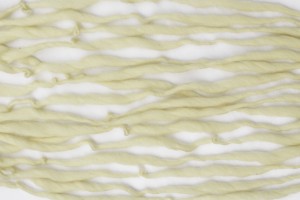Ivory
Important Things to Know
Ivory- as distinguished from bone, antler or horn-includes the tusks and the unusually large or projecting teeth of animals such as elephant, walrus and several species of whale. It consists of dentine, made up of components which are both organic (to provide the capacity for growth and repair) and inorganic (to provide strength). Identification of the type of ivory is based on the composition of the dentine and its specific growth structure.
Ivory is very reactive to its environment. It bleaches when exposed to light but the most severe changes are linked to changes in relative humidity and temperature. Low relative humidity causes desiccation, shrinkage and cracking, while high relative humidity can cause warping and swelling. Heat fluctuations include similar expansion and contraction. These problems are particularly acute with thin ivory objects, such as miniatures.
Some darkening or “patina” is the result of the natural aging process of ivory’s organic constituents. Because it is porous, ivory is also succeptible to staining. It darkens in contact with the skin or oils and can be stained by corroding metals or other colored materials.
Many liquids, including water and cleaning solutions, are destructive to ivory and should be avoided.
Handling
Handle ivory with white cotton gloves. If these are not available, wash your hands first with soap and water to remove hand oils and dirt.
Storage Conditions
The best protection for any ivory object is carefully controlled environment, both in terms of relative humidity (RH) and temperature. Ideal conditions are 45-55% RH and approximately F 69.998 (21.11° C) with low light levels, at approximately 5 foot candles. Conditions should be kept constant; at the least extreme conditions or rapid fluctuations should be avoided.
Keeping the object in a tightly closed display case or storage drawer provides a considerable degree of buffering against sudden changes in temperature and relative humidity and is protection against dust and dirt. Dark storage also eliminates damage due to light. However, as a note of caution, avoid sunlit or spotlit display areas, closed cases where heat can build up from interior light bulbs, proximity to ventilation or heating ducts, the tops of appliances, exterior walls or cold windows. Storage drawers and shelves should be lined with a chemically stable cushioning material such as polyethylene or polypropylene sheeting. Avoid using rubber-based materials for storage or packing as these can produce unnatural yellowing of ivory.
For additional protection, the artifact may be wrapped in unbuffered, acid-free tissue paper, and stored in a sealed polyethylene (zip-lock) type bag. Well washed unbleached muslin or diaper fabric may be substituted for the tissue.
Cleaning and Repairing
Broken, friable or extremely dirty objects requiring repair, consolidation or extensive cleaning should be referred to a professional conservator.

